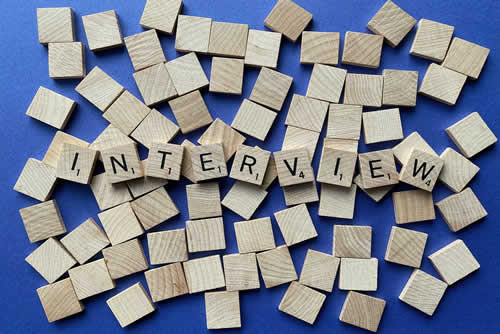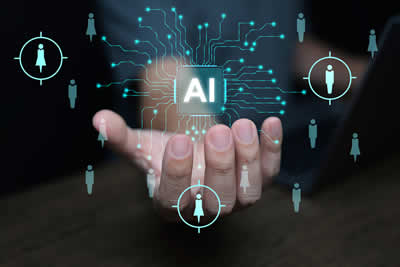Let’s face it, hiring has always been a challenging task because HR managers never know whether they've made the right choice ... until maybe it's too late! They need to go through piles of applications, and many rounds of interviews, which can be both expensive and time-consuming.
However, compared to traditional approaches, Artificial Intelligence (AI) is revolutionizing how companies are
hiring, training, and onboarding new employees. All by making it much faster, efficient, and data-driven than it has ever been.

In this article, we’ll look deeper into how AI is eliminating inefficiencies and making it all much more simple and accurate.
Automated Resume Screening
Automated resume screening is a process where AI-driven tools will analyze and filter job applications based on the criteria hiring managers set. This helps to quickly identify the most qualified candidates without manually needing to review every resume.
Let’s take a closer look at how automated resume screening works:
- Keyword Matching: AI compares resume content against job descriptions, prioritizing relevant applications.
- Parsing & Structuring: The system extracts data from resumes (skills, experience, education) and organizes it.
- Scoring & Ranking: Resumes are ranked based on how well they match job requirements.
- Filtering & Shortlisting: Unqualified resumes are filtered out, leaving recruiters with a refined candidate list.
- Bias Detection: There are AI tools that identify and reduce bias by focusing on skills rather than demographics.
Traditional methods were time-consuming since hiring managers needed to spend huge amounts of time going through resumes. Long gone are those days and now, AI tools are eliminating most of the manual work.
AI Resume Building
An
AI resume builder helps job seekers create optimized, professional resumes using machine learning and automation. These tools can analyze job descriptions, suggest improvements, and ensure resumes are ATS (Applicant Tracking Systems) compliant.

AI resume builders save people lots of time by doing most of the work for them, and they work in the following ways:
- Data input: Users provide job titles, skills, and experience.
- Template selection: AI suggests layouts optimized for readability and ATS compatibility.
- Content optimization: AI refines wording, suggests powerful action verbs, and eliminates all unnecessary fluffs that you don’t need in your resume. It’s always good to have a simple resume.
- Keyword matching: AI makes sure that your resume has all of the necessary job-specific keywords to bypass ATS screening.
- Customization & formatting: Users can tweak sections and styles for a polished look.
- Final review & export: The system checks for errors, and then generates a PDF or DOCX file.
AI resume builders are excellent for saving time, making sure that resumes get past automated screenings, and helping with grammar, phrasing, and structure.
AI-Powered Chatbots
AI chatbots use Natural Language Processing (NLP) and Machine Learning (ML) to automate conversations, answer questions, and assist users in real-time. They’re used in customer service, marketing, HR, healthcare, and more.
AI chatbots have revolutionized employee training & onboarding in ways like we’ve never seen. For instance, it personalized learning paths by suggesting training programs based on their needs.
Employees can ask chatbot questions regarding company policies, software tools, and best practices to reduce all burdens from the HR workload. Overall, AI chatbots can also make training engaging through quizzes, role-play scenarios, and interactive coaching.
Chatbots collect feedback, monitor progress, recommend improvements, and provide anonymous employee feedback channels. And the advantage AI-powered chatbots have over humans is that they're available 24/7, and if you are working with an international team, this is great because they always "know" where to redirect people.
AI Video Translators
AI video translators use machine learning to automatically transcribe and translate videos in different languages. They're widely used for e-learning, social media content, content localization, and business presentations.

AI video translators have completely revolutionized the way we train our team members and when you are working for an international company where there are language barriers, then this is helpful.
Having said that, let’s take a closer look at how AI video translators work:
- Speech Recognition (ASR): AI converts spoken words into text (transcription).
- Text Translation (NLP): The transcript is translated into the target language.
- Voice Synthesis (TTS): AI generates a natural-sounding voiceover in the new language.
This saves the team time from having to hire a translator. Also, they support multiple formats - and many online learning platforms will adjust phrasing to fit their target audience.
Predictive Analytics
AI-powered predictive analytics use Machine Learning (ML), big data, and statistical tools to
forecast future outcomes. This enables businesses to make better decisions.
AI predictive analytics collects data in real time, as well as from historical records and external sources. It uses ML algorithms to identify trends and predict future outcomes. And AI provides action points based on these.
When it comes to the recruitment process, hiring managers can use predictive analytics to analyze resumes and job history to suggest the best hires. Also, it helps in planning the workforce by forecasting staffing needs and skill gaps.

Bias Reduction
AI helps reduce bias in recruitment and employee training by focusing more on qualifications, skills, and performance metrics rather than subjective factors.
Bias reduction is important and it was recently found that
96% of hiring managers think unconscious bias is a problem.
And here's how AI reduces bias:
- Blind resume screening: AI removes names, gender, age, and other demographic data to prevent unconscious bias. For example: Some tools will anonymize resumes before they are evaluated by hiring managers.
- Skill-based recruitment: AI prioritizes candidates based on qualifications, skills, and experience rather than background.
- Automated job descriptions: AI detects biased language in job postings and suggests neutral, inclusive alternatives. It can also improve job descriptions to appeal to different types of talent.
- Diverse talent sourcing: AI searches for candidates from diverse talent pools.
- Standardized interviewing: This comes with the help of AI-powered chatbots to make sure that all candidates are evaluated consistently.
AI will detect biased feedback in performance reviews and provide constructive alternatives to make sure everyone is given fair growth opportunities.
AI-Based Interviews
AI-based interviews use machine learning (ML), natural language processing (NLP), and video analysis to assess candidates automatically. Hiring managers can use AI-based interviews to reduce bias and improve efficiency in the recruitment process when there are a large number of applicants.

Let’s take a quick look at how AI-based interviews work:
- Automated pre-screening: AI chatbots or virtual assistants will conduct initial interviews via text, voice, or video.
- Facial & speech analysis: AI analyzes tone, body language, word choice, and the confidence level of candidates during the video interview.
- Skills & behavioral assessment: The ideal candidate profile will be based on historical hiring data.
- Scoring & ranking: Candidates receive scores based on keywords, behavioral cues, and sentiment.
- Shortlisting & human review: AI recommends top candidates for final interviews.
AI-based interviews will use the same criteria for all applicants and allow for flexible scheduling and quick feedback.
AI Coaching & Feedback
AI-powered coaching and feedback systems use machine learning, NLP, and behavioral analytics to provide personalized and real-time insights for employees. These help enhance skills, improve performance, and drive career growth without requiring constant human supervision.
AI coaching and feedback work like chains connected to each other, meaning that one part won’t work without the other. This includes:
- Data collection: AI gathers insights from emails, chat messages, performance reviews, and meetings.
- Behavior & sentiment analysis: Communication styles, engagement levels, and tone are evaluated in real-time.
- Personalized coaching: It recommends learning materials and improvements based on employee performance.
- Automated feedback delivery: AI provides instant feedback through dashboards, chatbots, or email reports.
- Continuous learning: Coaching recommendations as employees are automatically improved or struggle with certain areas.
The upside of AI coaching & feedback is that it provides instant & objective feedback. It can support thousands of employees without requiring human mentors and removes unconscious bias from performance reviews.

If you'd like to learn more about what we provide, why not take a look at how we can help?
Boost your skills with our market-leading online courses at super-low prices.
What Will The Future Of AI In Hiring And Training Hold?
AI is transforming hiring and training forever, making processes more efficient, data-driven, and inclusive. From automated resume screening and AI-powered interviews to personalized employee training and real-time coaching.
Overall, it improves every stage of talent acquisition and development. This is achieved by reducing human bias, increasing scalability, and providing real-time feedback to candidates.
The future of AI isn’t about replacing people, but giving hiring managers the ability to make better, more informed decisions which create a much more engaged and high-performing workforce.






























